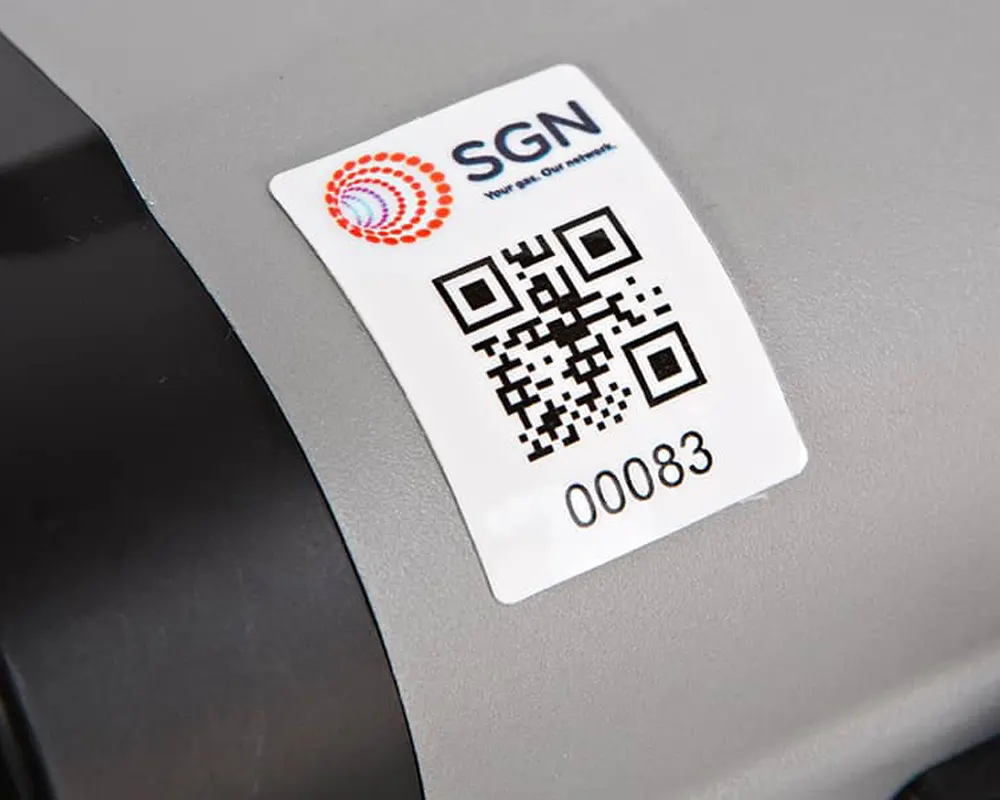Table of Contents
ToggleIntroduction
RFID asset labels are changing how businesses track and manage equipment, inventory, and tools. Using radio waves to transmit data, these smart labels remove the need for scanning barcodes one by one. Instead, they allow you to scan entire batches wirelessly, without even needing line of sight.
Whether you’re managing 100 items or 100,000, RFID helps you work faster, cut down on errors, and keep better records. In this guide, we’ll explain what RFID asset labels are, how they work, what they’re made of, how you can personalize them, and how they compare to barcodes and QR codes. We’ll also break down real-world uses and the key benefits for different industries.
What Are RFID Asset Labels?
RFID stands for Radio Frequency Identification. RFID labels contain a tiny chip and antenna, which send data wirelessly to a reader. That means no need to scan each label manually, and no need for line-of-sight like with barcodes.
You can scan assets through boxes, shelves, or packaging—all at once. It’s a fast, accurate way to manage physical items in bulk.
There are three main types of RFID tags:
Passive: No battery. Powered by the scanner’s signal. Most common and cost-effective.
Active: Battery-powered. Sends signals constantly. Best for tracking over long distances.
Semi-passive: Has a battery but waits for a signal to activate.
For asset management, passive RFID is usually the best balance of cost and performance.
Key Benefits of RFID Asset Labels
Wireless tracking — Read tags remotely, even through obstacles
Bulk scanning — Scan hundreds of tags at once
No line-of-sight — Unlike barcodes, tags don’t need to be visible
More data — Store extra info right on the tag
Durable design — Built for harsh environments
Optional tamper evidence — Shows if someone tried to remove the tag

What RFID Asset Labels Are Made Of
RFID labels are made of layered materials that make them flexible but tough:
Top layer: Usually polyester or polypropylene. Printable and strong.
Inlay: The RFID chip and antenna are embedded here.
Adhesive: Permanent glue keeps the tag attached to equipment.
Liner: A backing that you peel off before sticking the tag down.
They’re thin, bendable, and can stick to everything from laptops to pallets.
Personalising RFID Labels for Your Business
RFID tags can be fully customised to suit your needs:
Company branding — Add your logo, name, or colours
Custom text — Include asset names, departments, or usage details
Serial numbers — Each tag can be uniquely numbered
Barcodes or QR codes — Combine RFID with visual ID
Custom sizes — Fit to devices, shelves, or tools
Tamper-evident options — Tags that show signs of tampering
This means your RFID system won’t just work well—it’ll also match your workflow and visual identity.
RFID vs Barcode Tracking: What’s the Difference?
Here’s a quick look at how RFID compares to traditional barcodes:
| Feature | RFID Tags | Barcode Labels |
|---|---|---|
| Needs line-of-sight | No | Yes |
| Scan many at once | Yes | No |
| Data storage | High | Low |
| Tag cost | Higher | Lower |
| Scan speed | Fast | Slower |
| Best for | Large-scale or automated use | Manual tracking |
Many businesses use both. RFID for speed, and barcodes as a backup.
Where RFID Asset Labels Are Used
RFID labels are useful across a wide range of industries:
Warehousing & Logistics — Track goods in transit or in storage
IT & Data Centres — Automate audits and equipment tracking
Healthcare — Label medical devices and supplies
Retail — Improve stock accuracy and reduce theft
Manufacturing — Monitor tools, machines, and materials
Education & Libraries — Simplify book lending and device control
Why More Businesses Are Switching to RFID
RFID saves time, reduces mistakes, and gives you more control over your assets. Here’s what it offers:
No more manual scanning — Everything updates automatically
Real-time visibility — See where things are and who used them
Fewer mistakes — Less chance of human error
Scalable systems — Easy to expand as your asset list grows
Data-rich tracking — Store details like owner, location, and usage history
Final Thoughts
RFID asset labels take asset tracking to the next level. With wireless scanning, bulk reading, and strong data capabilities, they remove the pain points of manual tracking. When paired with visual features like logos, serial numbers, and barcodes, they become a complete solution for businesses of all sizes.
If you’re managing growing inventory, high-value tools, or time-sensitive assets, RFID gives you faster, more reliable control.
